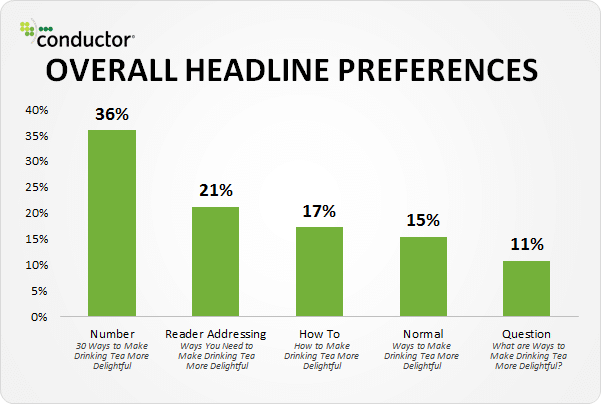
Evergreen Content Smarts: How to Create (and Update) Timeless Blog Posts
If you’re like most content marketers, you want to get the maximum value out of every blog post you create.
Evergreen content is a collection of content that is relevant to your target audience for years to come.
In other words, evergreen content is timeless. Think of it as the Shakespeare of content marketing, minus the flowery language and complex tragedies. When you make timeless blog posts a priority, you’ll get better returns from your content marketing investment.
Creating content that reads as well in 2027 as it does in 2020 takes some careful planning. Done right, it can become the backbone of your content marketing strategy.
Learn how you, too, can make the most out of your content marketing investment with evergreen content.
What is Evergreen Content?
Evergreen content in the most basic definition is content that is optimized for SEO the right way and has no expiration date that will maintain your expertise and authority for a long time period.
As people search for specific thing using key words they will continue to find your page over and over again.
Other type of content is content that needs to be seen right away as it will be outdated in 5, 8, 10 months from the time it is published but it is relevant to today’s trends in your niche.
Now you are probably thinking wait if the content is going to be outdated in such a short period of time why do I want to include that into my content?
The best marketing plan is to mix both timely content with evergreen (timeless) content, this will keep readers coming back for the timeless content as well as new readers who are looking for the timely content which will provide you the best opportunity to increase your authority, your readership, and your content marketing ROI.
Answer Perennial Customer Questions
Your customers probably have common questions that rarely change over the years. Creating content around those questions is one of the most effective ways to have content that performs well in searches for your products for years on end.
Commercial furniture manufacturers, for instance, could write a blog post about the advantages of vinyl over cloth upholstery or how to clean stains on each type of material. On the B2C side, a handmade jewelry company might feature blog posts about what type of care specific gems or metals require.
Your sales, customer service, product development, and engineering teams can be fruitful sources of the topics for these questions. And there’s a bonus.
Answering these oft-asked questions provides an SEO benefit, too. With Google’s new “Featured Snippets” feature, the best answers to searchers’ queries land at the very top of the search results, even above Google’s top-ranked sites.

When new developments in your industry arise, all you need to do is update the content to reflect those changes. Having a repository of content that answers these common questions saves you time, allowing your content teams to spend more time writing blog posts on breaking industry news.
Create Tutorials and How-To Videos
Before buying your product, prospects need to know how easy it will be to use. Tutorials and how-to videos (or a combination of both video and printed tutorials on a single blog post) are a sure way to build customer confidence.
So long as you continue to produce that product, these posts will never outlive their usefulness. One word of caution, though. Make sure your instructions are easy to follow, even for someone with limited or no experience. Visuals help, as do clear, concise definitions and descriptions.
Solve Problems Your Customers Face
Chances are good that your customers face some of the same challenges today as they did in 2016. Content that solves those problems positions you as not only an authority in your field, but even more importantly, as someone eager to help.
If you feature your product or service as the solution, frame it in the context of a “hero’s journey.” For more impact, cast your customer as the hero, rather than you or your product. In a Star Wars context, you would be the wise guide Yoda, while your product would be the lightsaber your customer wields to conquer her challenge.
Unlike 1950s commercials where a fairy-tale figure appeared out of nowhere to zap stains out of existence or provide inspiration for the night’s meal, your content should provide the critical details that make your product the best solution. Today’s customers, be they B2B or B2C, won’t accept your solution by blind faith, simply because they’ve read some catchy words or watched an entertaining video.
Instead, do some research into your customers’ and prospects’ interests and the problems they face. Then create relevant content around those topics.
Leverage the Addictive Power of Listicles
List posts, such as “The 10 Top Reasons to Vacation in Beach Towns,” rank way above other types of posts in several categories, as Kinsta’s Robert Katai points out. These posts, called “listicles,” lead other posts by 71 percent in engagement, social sharing, click-through rate, and search results.

There’s a reason for that, and it lies deep within human psychology. Turns out, these posts tick off some emotional boxes that make them like comfort food for your brain, according to the BBC’s Claudia Hammond. Here’s why they work so well as evergreen content:
- A familiar layout: Readers know both the number of items in the list and the topic. This gives your audience a “mental map” drawn from their experience. Since the material is already organized in a logical framework, it’s easier for your readers’ brains to digest the information. Since it is already organized by number, it seems like it will be a quicker read for time-strapped audiences.
- Soothes your audience’s FOMO: Fear of missing out (FOMO) is a powerful motivator. The headline’s numerical format, along with power words like “top” or “critical” in the title, make a list into something too important to miss.
- Easy to scan: Like bullet points, numbered sections make it a simple task to scan even long blog posts. Even if your audience doesn’t read the fine print, they’ll get the general gist by just reading the subtitles.
- Provides a definitive ending: People often like to peek at the ending of a novel, just to see if it is worth reading. Numbered lists assure readers of a definitive ending in only a few steps, so they’re more likely not to skip to the end.
- Engages readers in the thrill of the hunt: Listicles engage your audience’s desire to predict what’s on them. In fact, psychologists tell us that a reader’s brain makes kind of an internal bet with itself, engaging them in the thrill of the game. If they feel likely to guess right, dopamine (the feel-good hormone) kicks in, engaging them even more.
That’s just from the reader’s perspective. Listicles are excellent candidates for recycling. Simply update the information, add or subtract a heading or two, and send it out again to work its magic.
Get New Audience Segments Up to Speed with a Glossary
I’m all about communicating in plain English. All too many brands load their content with jargon. For example, in the previous section, I could have just written “FOMO” and risked my readers clicking away from my post to look up the meaning. If you define a term within your text, you have a better chance of keeping them on the page.
However, for prospects who aren’t familiar with your industry, a glossary is a great way to help them get acquainted with terms they’ll likely see on an invoice or brochure. Here’s what I mean.
Let’s say you’re a laptop manufacturer. You know your own industry inside and out, but you’re looking for a shipper to send them to customers halfway around the world. If you’re wise, you will create a glossary that explains the complex world of shipping terms to prospective customers.
That way, when they read one of your blog posts or receive an invoice, they will have a reference point to turn to. If your industry is highly technical and sells products to non-industry insiders, a glossary is a great way to familiarize them with your products.
Create Resource Lists
If your audience were already experts in your niche, they would be competitors, not prospects. Since they’re not familiar with tools and other resources that can amplify the value your products bring to them, creating a resource list is an excellent way to provide your audience with these helpful links.
Here are several examples from our own content inventory. As a content marketing agency, we help businesses from startups and small businesses to large enterprises create engaging content that yields results.
However, some of our clients aren’t large enough to turn over all their content marketing to us. They have to do some of it themselves. For that reason, our team churns out content that can help them succeed if they’re handling part of their content production themselves.
Resource lists are a big part of that help. For example, we created a list of highly successful blogs that could inspire our clients to reach for the stars in their own content. Another resource list, from 2016, is still going strong, providing our clients with content marketing resources that can strengthen their search engine optimization (SEO), find influencers for them to engage with, and hire freelancers who can help them with their workload.
Sharing valuable information is an essential part of content marketing. With a few updates now and then, resource lists can be a valuable addition to that information.
Repurpose Dated Content with an Evergreen Slant
Last year, practically every company pumped out content about how their customers could deal with the coronavirus pandemic and its attendant restrictions. After the vaccines arrived, we could see that there was some light at the end of that tunnel.
Once the pandemic ends and we’re out of the virtual tunnel, you’ll have a repository of COVID-19-related content whose relevance will be as dated as 1980s big hair and disco balls.
Instead of trashing it or relegating it to your content graveyard, repurpose it as an evergreen piece. With a little tweak here and there, you can transform a blog post about how to respond to the coronavirus crisis into one about how to respond to any crisis. A post about coronavirus sanitizing protocols could easily become one about keeping your office as germ-free as possible.
Use Evergreen Content for Sales Enablement
Using evergreen content to help your search results is not the only reason for investing time into it, it can also help you gain customer trust and loyalty, generate leads, and prove that you are an authority on your brand.
By doing some investigating, research, and narrowing down your topic you can come up with timeless evergreen content that your readers want. You can also update, tweak, and share previous posts according to the comments or questions that have been left on the topic.
Make sure that your evergreen content is comprehensive, so that your readers will have no need to go anywhere else for the information they want.
A few tips on making evergreen content help with sales are;
- Guest posting or syndication allows you to raise awareness of your brand.
- Paid promotion for a tweet on twitter or a Facebook post can help get your content in front of 1000s of new readers at any given time who would not normally have found your content.
- Ask well known influencers in the industry to contribute to your piece which lends more credibility to you.
- Feature it on your website.
Coda
Learning how to use your evergreen content to create more loyalty and sales should be a priority if you wish to gain authority and make more people aware of your product or services. There are several ways to make evergreen content work for you, not just in creating loyal readers but also in converting those readers to customers who buy only your brand if possible. To summarize our tips on how to write evergreen content,
- Focus more on beginners.
- Write on a precise topic, such as Halloween decorating.
- Inspire your reader to take action.
- Use an easy to read and follow format.
- Repurpose the content to fit your readers’ preferences and share it again.
Building links to your evergreen content pieces gives you more authority on your brand since other people in your industry who have influence are directing their readers to your content on your site.
Whether it’s updating older content to give it new life or creating new posts with lasting value, leverage evergreen content to drive more traffic to your website.
If you are ready to get more traffic to your site with quality content published consistently, check out our Content Builder Service.






